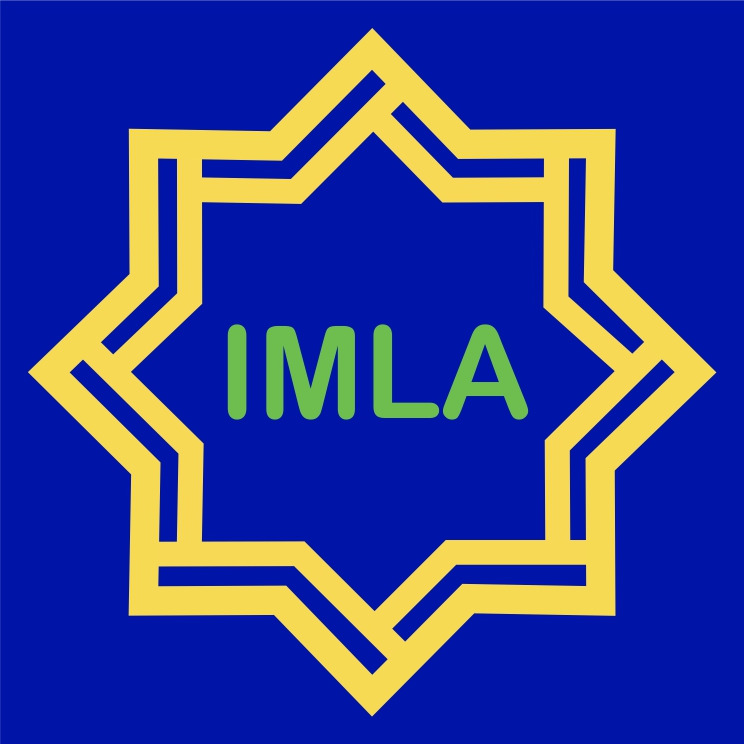Tathwir Mawad al-Ta’bir al-Tahriry ‘Ala Dhuà Maharat al-Tafkir al-Úlya li Tarqiyah Kitabah al-Maqalah li Thullabah Qism Ta’lim al-Lughah al-Ãrabiyyah
DOI:
https://doi.org/10.29240/jba.v6i1.3242Keywords:
Development, Arabic writing materials, Higher Order Thinking Skills (HOTS), student’s writing essayAbstract
The process of developing learning material  is very important in language education, and that learning materials should be adapted to the progress and demands of time.This paper aims to develop the material learning of arabic writing for Student of Department of Arabic Language University of Muhammadiyah Malang, this paper used Bolito and Julie model, and the data was collected through interview, observation, documents, questionnaire, and pre test and post test, the technique of data analysis using Miles, Huberman and Saldana’s theory, by condensing the data after collecting it, then displaying and summarizing it. The results for this search are; 1) Students need materials for writting essay in based on higher-order thinking skills. 2) the characteristics of material writting developed include (a) thematic and factual which suitable with the environment where the student live, for instance the move of the capital of Jakarta to borneo island in circumstances of new corona virus pandemic, and the phenomenon of street children and homeless people in Indonesia etc;  (b) mind mapping to organize ideas; (c) Vocabulary. 3) The developed materials are valid for use  due to it adapts to the condition where the students live and then help them gather the information before writing the article 4) Teaching materials for Arabic writting essay based on higher-order thinking skills are effective to improve students’ ability in Arabic writing essays by solving problems from the topics, criticizing the subjetc which is encourage them to discuss and present their opinions  by rewriting sentences and paragraphs in their language, and hence students practiced in three levels of higher order thinking skills: analytical, evaluative and creative thinking.
Â
Downloads
References
Anne Hanson. Brain-Friendly Strategies for Developing Student Writing. Second Edi. California: Corwin Press A SAGE Company, 2009.
Ariana, Yoki. “Buku Pegangan Pembelajaran Berorientasi Pada Ketrampilan Berfikir Tingkat Tinggi.†Direktorat Jenderal Guru dan Tenaga KependidikanKementrian Pendidikan dan Kebudayaan, 2018.
Ariyana, Yoki, and Reisky Bestary. Buku Pegangan Pembelajaran Berorientasi Pada Keterampilan Berpikir Tingkat Tinggi. Direktorat Jenderal Guru dan Tenaga Kependidikan Kementerian Pendidikan dan Kebudayaan, 2018.
Ariyatna, Ernanda.Adi saputra, Abdurrahman.Pramuniati, Isda. “The Development of Teaching Materials Writing Biography Text Based on Mind Map.†Advances in Social Science, Education and Humanities Research 104, no. Aisteel (2017): 292–294.
Ashour, Yahya. “The Effect of Teaching Critical Thinking on Al-Buraimi University College Students’ Writing Skills: A Case Study.†International Jurnal of Applied Linguistics and English Literature Vol.4.No.6 (2018).
Crestiani, Juwita. “The Effectiveness of Mind Mapping in Improving Student’s Descriptive Writing Ability at Cokro Aminoto University Palopo.†Jurnal Ethical Lingua Vol.2.No.1 (2015): 57–58.
Fifih Nurafiah, Elah Nurlaelah, Ririn Sispiyati. “perbandingan peningkatan kemampuan berpikir kritis siswa smp antara yang memperoleh pembelajaran means-ends analysis (mea) dan problem based learning (pbl).†Jurnal Pengajaran MIPA V.18.No.1, no. April (2013): 3.
Hyland, K. “Materials_for_developing_writing_skills.†In B,Tomlinson(Ed), 391–406. London, 2014.
Ilmiani, Aulia Mustika, Delima. “Innovation in Learning Arabic Reading Skills Using Higher Order Thinking Skills.†Al-Ta’rib 9, no. 1 (2021): 99–110.
Ilyas, Hamzah Puadi. “Critical Thinking : Its Representation in Indonesian ELT Textbooks and Education Hamzah Puadi Ilyas University of York Education February 2015.†University of York, 2015.
Kashefian-naeeini, Sara, and Yousef Kouhpeyma. “Fostering Learner Autonomy in Educational Settings.†International Journal of Multicultural and Multireligious Understanding volume.7, no. 7 August (2020): 190–201.
Matthew B, Miles.Huberman, Michael.Saldana, Johnny. Qulitative Data Analysis. Edited by Helen Salmon. 3rd ed. Arizona: SAGE Publication,Inc., 2014.
Noza, A., Rini, and Ahmad Fikri. “A.Integration of Local Wisdom In Arabic Learning...†Jurnal Al Bayan:Jurnal Pendidikan Bahasa Arab Vol.11.No. (2019): 369–370.
Pratiwi, Indah. “Efek Program Pisa Terhadap Kurikulum di Indonesia.†Jurnal Pendidikan dan Kebudayaan Vol. 4, No (2019): 51–71.
Putriani, S., and Suarti Djafar. “Analisis Kemampuan Literasi Matematika Dan Keterampilan Berfikir Mahasiswa Ditijau Dari Level Kemampuan Matematika Dalam PISA.†Jurnal Pendidikan Vol.2.No.2 (2018): 39-40.
Rahmi indah, Syihabuddin, Sopian, Asep. “Analisis Kualitas Tes Bahasa Arab Berbasis High Order Thinking Skills (HOTS).†Lisanuna 10, no. 1 (2020): 45–54.
Ritonga, Mahyudin.Widodo, Henrdro.munirah.Nurdianto, Talqis. “Arabic Language Learning Reconstruction as a Response to Strengthen Al-Islam Studies at Higher Education.†International Journal of Evaluation and Reasearch in Education(IJERE) 10, no. 1 (2021): 355–363.
Tomlinson, Brian. Materials Development In Language Teaching. Edited by Brian Tomlinson. Second edi. Cambridge: United Kingdom University press,Cambridge, 2011.
Widyatmike, S, and G.M.Yusak. H. “Pengembangan Bahan Ajar Menulis Essay Dengan Memanfaatkan Kearifan Lokal Melalui Pembelajaran Berbasis Proyek (PBP) Siswa SMA.†Jurnal DIGLOSIA V.2.No.1. (2019).
Downloads
Published
How to Cite
Issue
Section
Citation Check
License
Authors who publish with Arabiyatuna: Jurnal Bahasa Arab agree to the following terms:- Authors retain copyright and grant the journal right of first publication with the work simultaneously licensed under a Creative Commons Attribution-NonCommercial-ShareAlike 4.0 International License (CC BY-NC-SA 4.0) that allows others to share the work with an acknowledgment of the work's authorship and initial publication in this journal.
- Authors are able to enter into separate, additional contractual arrangements for the non-exclusive distribution of the journal's published version of the work (e.g., post it to an institutional repository or publish it in a book), with an acknowledgment of its initial publication in this journal.
- Authors are permitted and encouraged to post their work online (e.g., in institutional repositories or on their website) prior to and during the submission process, as it can lead to productive exchanges, as well as earlier and greater citation of published work (See The Effect of Open Access).














 This work is licensed under a
This work is licensed under a 